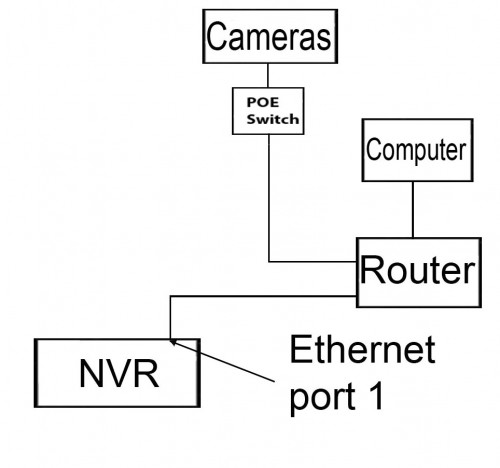
This can be done by entering this into any browser: To use MJPEG streaming, you need to enable one of the streams to use this format.If the user/pass is wrong, the camera can lockout and refuse to answer the binding requiring a reboot of the camera, so be sure the details are correct before the camera tries to poll the camera too many times.# Dahuaįor MJPEG to work, you need to set the first sub-stream to use MJPEG format for the default settings to work, otherwise you can override the default with mjpegUrl config with a valid URL for MJPEG streams. The old alarm polling based method is used if you setup as amcrest, and the newer/better event based method is used if you setup as dahua instead.Īll other features should be the same between the two. It is better to always setup your Amcrest camera as a dahua thing type.
#Setting up ip cam code#
These cameras do not have the ability to create H.264 streams and hence can not be used with HLS, however all other features should work.ĭue to many custom firmwares available, you may need to ask the firmware developer what the URLs are for snapshots and MJPEG streams if they have changed the defaults from what the Arduino IDE sample code uses.įfmpegOutput = "/tmp/Esp32Camera/", ffmpegInput = "" ] # Amcrest
#Setting up ip cam how to#
Some cameras allow the key frame to be created every second or a different amount by the user, refer to your cameras manual and support on how to do this. Snapshots generated by FFmpeg use the key frames (iFrames) to lower the CPU load, and since some cameras only produce a key frame every 2+ seconds with their default settings, this will effect how often a snapshot is produced. When using FFmpeg instead of a provided URL to create snapshots, it requires more CPU that you can turn on and off via the pollImage channel using a switch or rule. If your camera has a snapshot URL, provide it to the binding via the config called snapshotUrl after first testing the URL in any browser. This binding can turn a RTSP stream into snapshots (.jpg still pictures), create motion and audio alarms, cast the camera and much more.įFmpeg is required to be installed for these features to work and this must be done manually.įFmpeg can be installed very easily see Video Streams. # Special Notes for Different Brands # Generic Cameras Only after doing the above ask for help in the forum and create a new thread.Search the forum using any log messages to find how others have already solved it.To enable TRACE logging, enter this in the openHAB console log:set TRACE. Always look at the log files with TRACE enabled, as any FFmpeg and camera errors may not reach the INFO logs.Check if the camera is offline, if so there will be a reason listed.Check this readme for any setup steps for your brand.To see what features each brand has implemented from their APIs, please see this post: They usually have better picture quality and more advanced features compared to lower priced cameras. I recommend purchasing a brand of camera that has an open API, as many features use far less CPU when done with an API camera. Maby Don Stephens, tagged two way audio cameras, audio recording, IP camera setup.This binding allows you to use most IP cameras in openHAB and has many hidden features, so please take the time to read through this guide to learn different ways to work with cameras that you may not know about.

Setup of our two-way audio security cameras is simple, and we explain how to do so in this guide. There are a few different ways to conduct two-way talk with our security camera systems. Our Security Camera Systems allow the end user to see and listen from their camera feeds, and grant the ability to speak into a microphone to talk through one of our two-way audio security camera's speaker. a speaker and microphone built-in similar to an intercom.



To be able to interact with a person at the camera, the camera would have to have two-way talk capabilities, i.e. One-way audio is great for listening to sound originating from the location of a camera, but it will not allow interaction with a person at that location. CCTV Camera World offers solutions for both one-way and two-way audio. Whether you have a security camera system for a home or business, the need for two-way audio interaction with talk-back capability may arise.


 0 kommentar(er)
0 kommentar(er)
